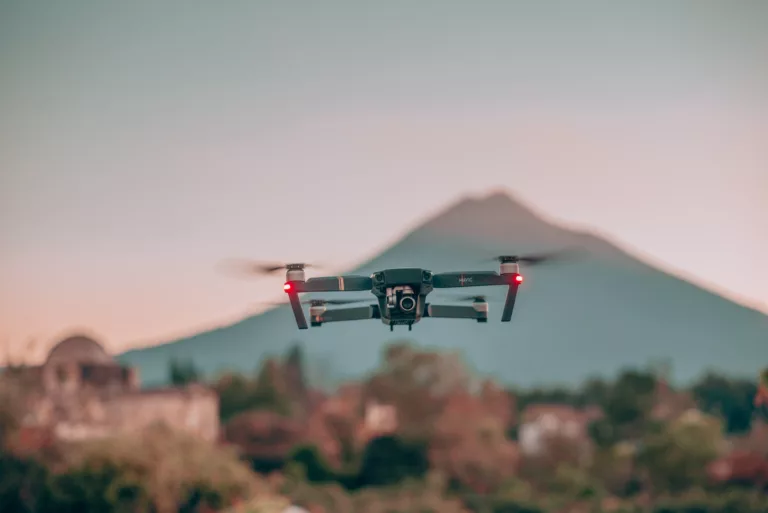
Article Archive by Year

In Part 3 of a five-part series on emerging technologies, the author focuses on the roles of artificial intelligence and machine learning in responding to emergencies. These transformative technologies are revolutionizing emergency management, humanitarian relief, and disaster response

Information Technology Sector Perspectives
October 18, 2023
The Information Technology Sector is one of 16 sectors identified as critical infrastructure under the Cybersecurity & Infrastructure Security Agency. Domestic Preparedness invited subject matter experts to answer questions about this sector, including how the sector and its interdependencies can affect any community.

Emerging Technologies, Part 2 – Uncrewed Vehicles
October 18, 2023
Part 2 of a five-part series on emerging technologies focuses on technologies designed to perform tasks and reduce human risk. Find out more about these autonomous or remotely controlled machines designed to perform tasks without human operators’ direct involvement.

Emerging Technologies, Part 1 – Information and Communication
October 10, 2023
This is Part 1 of a five-part series on emerging technologies that can enhance the management of and response to future emergencies and disasters. This part focuses on an all-hazards emergency management approach and information and communication technologies.

National Preparedness Efforts Among Tribal Communities
October 9, 2023
Participants at the National Tribal Emergency Management Council’s annual conference in August shared some key takeaways for tribal and nontribal communities to improve their disaster preparedness efforts. Understanding the concerns and challenges is essential.

COVID-19 – Emergency Plans and Readiness Exercises
October 4, 2023
During the COVID-19 pandemic, plans’ failures had little to do with the genomic sequence of the virus and more about what these plans were not: familiar, equitable and inclusive, interconnected and scalable, clear and actionable, and resilient.

Water and Wastewater Sector Perspectives
October 4, 2023
The Cybersecurity & Infrastructure Security Agency defines the Water and Wastewater Systems Sector as one of “16 critical infrastructure sectors.” Read about this sector’s numerous challenges in maintaining the high level of service necessary to the communities they serve.

Always Prepare for the Future, But Never Forget the Past
September 27, 2023
This September edition of the Domestic Preparedness Journal addresses these and other key preparedness efforts that should be considered when planning for future incidents. Reflecting on the events of 9/11, consider the personal costs that emergency responders pay for serving their communities and develop mitigation strategies to reduce those costs.

Reducing Workplace Violence in Healthcare Facilities
September 27, 2023
Violence in healthcare facilities significantly challenges patients, providers, support staff, visitors, and first responders. However, healthcare-specific information and tools can help protect staff, patients, and others in these facilities.

Planning for A Cross-Country Special Event
September 27, 2023
A solar eclipse is a unique form of special event that does not always fall under emergency planning protocols, but it should. This article urges preparedness professionals to collaborate with eclipse planning committees to ensure the safety and security of all those involved.
Emerging Technologies, Part 3 – AI and Machine Learning
October 25, 2023
In Part 3 of a five-part series on emerging technologies, the author focuses on the roles of artificial intelligence and machine learning in responding to emergencies. These transformative technologies are revolutionizing emergency management, humanitarian relief, and disaster response
Information Technology Sector Perspectives
October 18, 2023
The Information Technology Sector is one of 16 sectors identified as critical infrastructure under the Cybersecurity & Infrastructure Security Agency. Domestic Preparedness invited subject matter experts to answer questions about this sector, including how the sector and its interdependencies can affect any community.
Emerging Technologies, Part 2 – Uncrewed Vehicles
October 18, 2023
Part 2 of a five-part series on emerging technologies focuses on technologies designed to perform tasks and reduce human risk. Find out more about these autonomous or remotely controlled machines designed to perform tasks without human operators’ direct involvement.
Emerging Technologies, Part 1 – Information and Communication
October 10, 2023
This is Part 1 of a five-part series on emerging technologies that can enhance the management of and response to future emergencies and disasters. This part focuses on an all-hazards emergency management approach and information and communication technologies.
National Preparedness Efforts Among Tribal Communities
October 9, 2023
Participants at the National Tribal Emergency Management Council’s annual conference in August shared some key takeaways for tribal and nontribal communities to improve their disaster preparedness efforts. Understanding the concerns and challenges is essential.
COVID-19 – Emergency Plans and Readiness Exercises
October 4, 2023
During the COVID-19 pandemic, plans’ failures had little to do with the genomic sequence of the virus and more about what these plans were not: familiar, equitable and inclusive, interconnected and scalable, clear and actionable, and resilient.
Water and Wastewater Sector Perspectives
October 4, 2023
The Cybersecurity & Infrastructure Security Agency defines the Water and Wastewater Systems Sector as one of “16 critical infrastructure sectors.” Read about this sector’s numerous challenges in maintaining the high level of service necessary to the communities they serve.
Always Prepare for the Future, But Never Forget the Past
September 27, 2023
This September edition of the Domestic Preparedness Journal addresses these and other key preparedness efforts that should be considered when planning for future incidents. Reflecting on the events of 9/11, consider the personal costs that emergency responders pay for serving their communities and develop mitigation strategies to reduce those costs.
Reducing Workplace Violence in Healthcare Facilities
September 27, 2023
Violence in healthcare facilities significantly challenges patients, providers, support staff, visitors, and first responders. However, healthcare-specific information and tools can help protect staff, patients, and others in these facilities.
Planning for A Cross-Country Special Event
September 27, 2023
A solar eclipse is a unique form of special event that does not always fall under emergency planning protocols, but it should. This article urges preparedness professionals to collaborate with eclipse planning committees to ensure the safety and security of all those involved.
Follow Us
Get Instant Access
Subscribe today to Domestic Preparedness and get real-world insights for safer communities.
ARchives
Article Out Loud – Three Puzzle Pieces That Increase Community Preparedness
September 13, 2023
This author reflects on his team’s direct mission to New York in response to the September 11, 2001, terrorist attacks, commonly referred to as 9/11, to consider if communities are more prepared today than they were in 2001.
Article Out Loud – Responding to the Call – The Cost of Caring for Others
September 11, 2023
There is a cost to caring for others, but it does not need to be a lifelong debt that continues to overwhelm the people who stepped up and those around them. The cost can be manageable with the right plan of support and the willingness to explore coping options.
Article Out Loud – Citizen Soldiers and American State Defense Forces
September 6, 2023
By JAMES P. HOWARD Ⅱ, An Article Out Loud from the Domestic Preparedness, September 06, 2023.Targeted-violent events threaten staff and students’ physical, psychological, and emotional well-being in public schools. However, the increasing frequency of these incidents raises concerns about the preparedness of incoming teachers and current staff to handle such
Article Out Loud – Bioterrorism – Could Smallpox Return?
September 6, 2023
Although smallpox was eradicated from its human population and reservoir, it is still in designated stockpiles controlled by two nations and possibly in other unknown locations. Learn about the possible threat and the need for greater preparedness and discussion.
Article Out Loud – The Great Melting Pot of Domestic Preparedness
September 6, 2023
Many emergency preparedness professionals want to make the nation safer and more secure. However, some of the same challenges described in this 2005 article, such as hospital staffing, still need to be addressed.
Article Out Loud – Pandemic Influenza: A Catastrophe in Waiting?
September 6, 2023
An emergency medicine physician shared this in-depth article in 2005 outlining 10 key action items needed to protect communities during a pandemic. Will these actions be implemented before the next pandemic?
Article Out Loud – The Three Ts of Terrorism – Finding the Facts in the News
August 23, 2023
The “three Ts of terrorism” described in this 2011 article remain critical components for analyzing a terrorist attack and finding information to help determine the source of the attack.
Article Out Loud – Finding Comfort Around the World
August 23, 2023
The Hospital Ship USNS Comfort has been carrying out disaster-relief, humanitarian-assistance, and combat-casualty missions since 1987. Learn about this floating hospital’s capabilities from this 2011 article.
Article Out Loud – Targeted Violence in Schools: Are Future Educators Prepared?
August 23, 2023
Targeted-violent events threaten staff and students’ physical, psychological, and emotional well-being in public schools. However, the increasing frequency of these incidents raises concerns about the preparedness of incoming teachers and current staff to handle such incidents.
Article Out Loud – Fireproofing the Future: Safeguarding Against Wildfires
August 23, 2023
July 2023 was the world’s hottest recorded month in history. Increasing heat events increase the risk of wildfires. However, good land and waste management practices can significantly prevent and mitigate the risk and consequences of these events.
Follow Us
Get Instant Access
Subscribe today to Domestic Preparedness and get real-world insights for safer communities.


